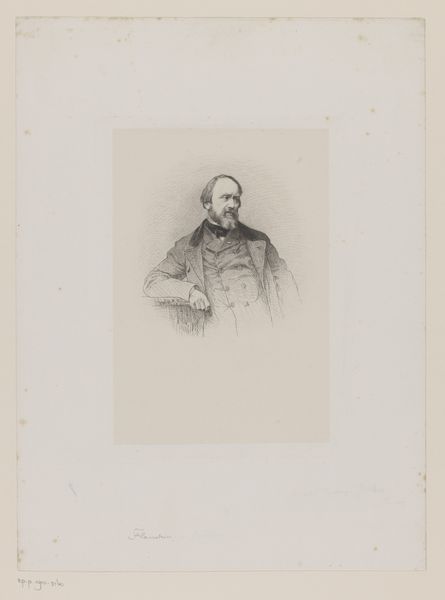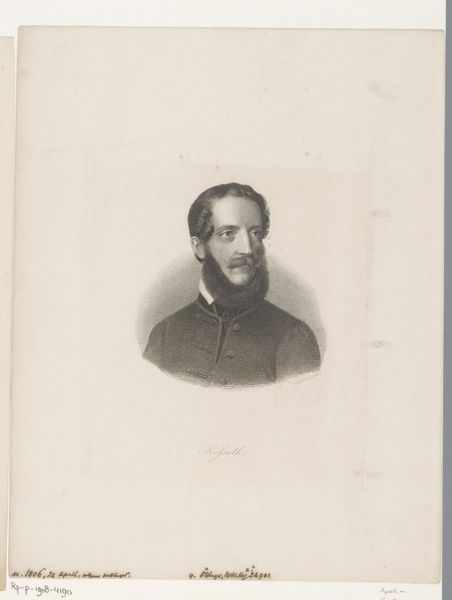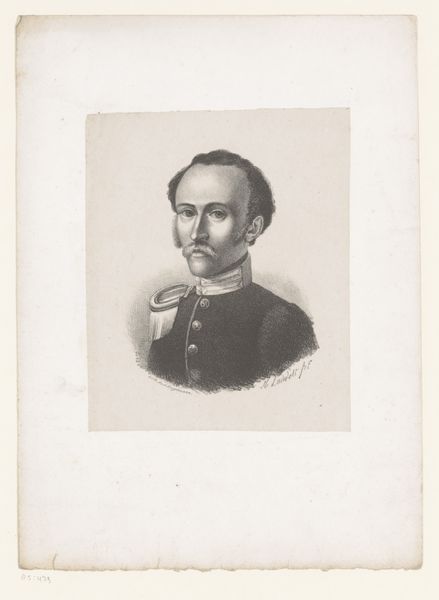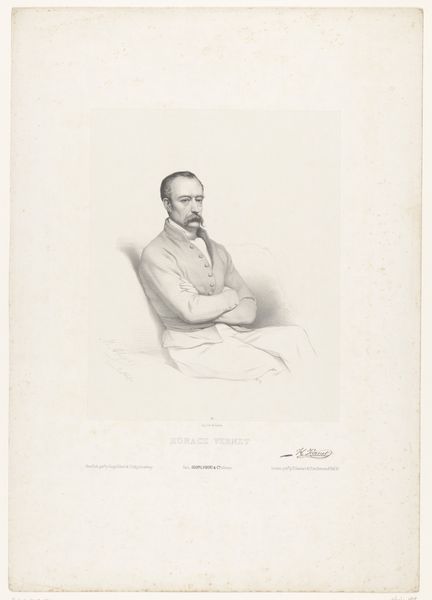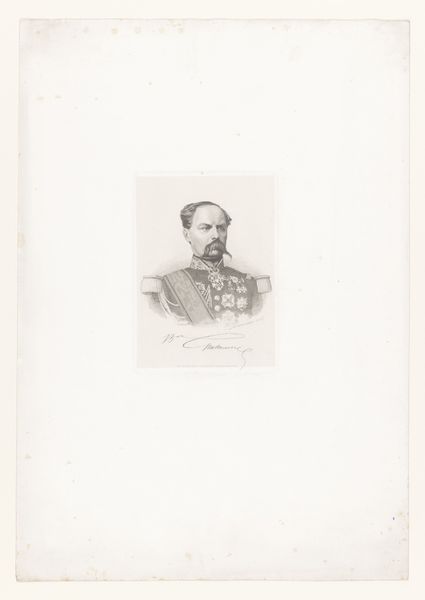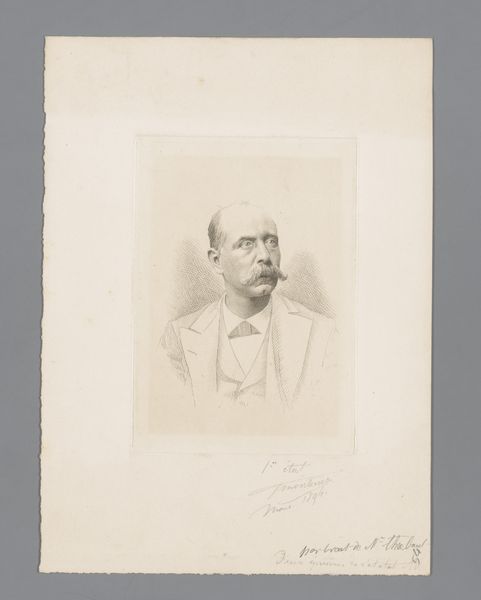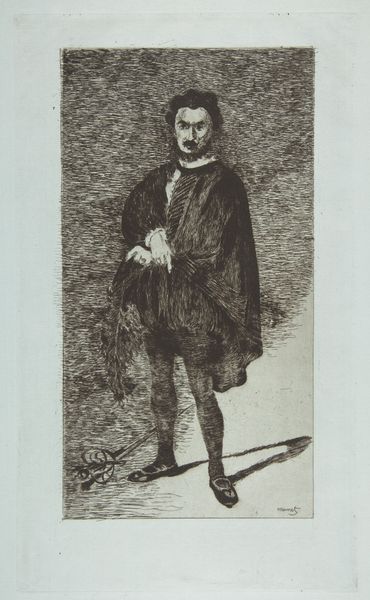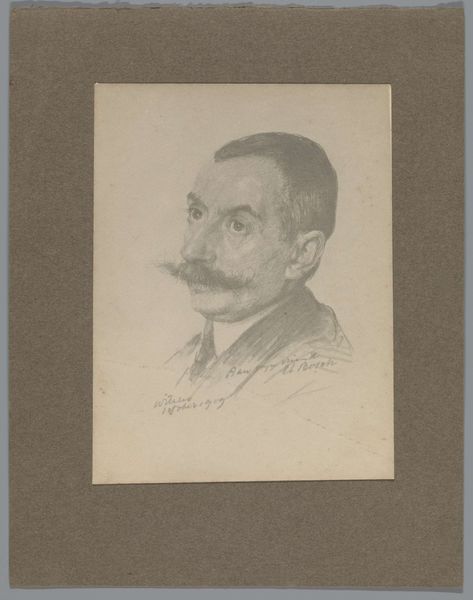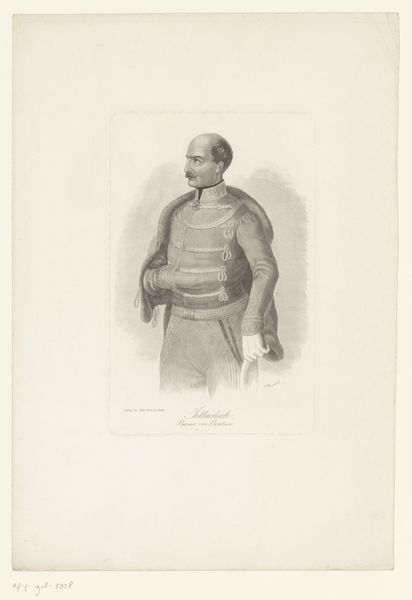
Dimensions: height 280 mm, width 212 mm
Copyright: Rijks Museum: Open Domain
Curator: Here we have an intriguing piece titled "Portret van Horace Vernet." It's a print, an engraving specifically, created sometime between 1849 and 1898 by Alphonse-Charles Masson. Editor: My first impression is one of starkness, of greyscale restraint, which almost paradoxically, makes the figure incredibly present. There’s a quiet intensity about this portrait. Curator: Absolutely. As an engraving, the line work is critical, defining the form and character. Consider how the density of lines shapes Vernet's features, the detailing of his mustache and beard and his garments—it speaks to the labor-intensive process and precision that defined printmaking at this time. Editor: The composition draws the eye immediately to Vernet’s face. Notice the subtle contrast that directs light to his features and conveys an element of inner depth, revealing aspects of his character, or, perhaps more accurately, what the artist wished to convey. Curator: Vernet was himself a very well-known artist, especially renowned for his military paintings, popular among the bourgeoisie of the time. So the reproduction of his image would have played a vital role in circulating his image, increasing his social capital within the 19th-century art market. Editor: Interesting. It adds another layer to our perception. Looking closely, one also notes details such as the draped curtain and framed art piece behind the portrait, creating depth in a calculated manner, lending itself to semiotic interpretation. Curator: And consider how an engraving such as this became part of the visual culture; circulated widely, reproduced in books or displayed in homes, contributing to the artistic literacy and shaping visual culture through mass consumption. Editor: Precisely. This artwork truly captures how romanticism engaged with visual form while offering a glimpse into how meaning could be constructed through accessible artwork that was not solely tied to monumental oil on canvas formats of previous eras. Curator: This exploration of Alphonse-Charles Masson’s work encourages us to delve into understanding Romanticism beyond conventional narratives and its interaction with the dynamics of artistic production. Editor: Yes, indeed. Exploring both the formal composition and societal context lets one see so many layers of complexity that might otherwise be overlooked in a simple black and white engraving.
Comments
No comments
Be the first to comment and join the conversation on the ultimate creative platform.
